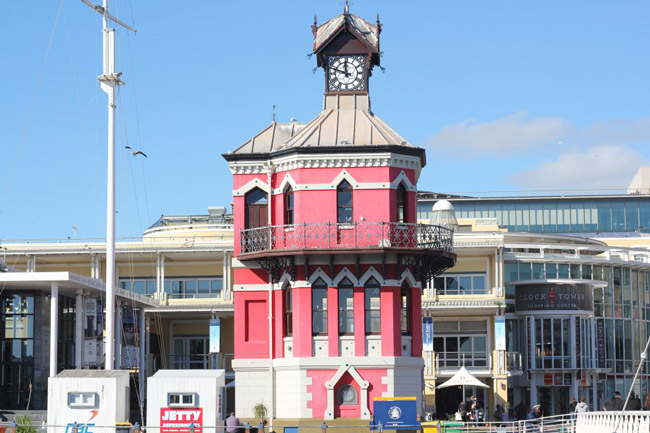UK-based shipping author and historian, Peter Newall, has called one of the most iconic buildings at the V&A Waterfront “a disgrace”.
Newall slammed V&A Waterfront management for neglecting the tower, which he insists is the “most important building in [the Waterfront]’s portfolio”.
Completed in 1883, The Clock Tower was originally the harbour signal station and the port captain’s office. Newall explains that as the harbour expanded, the port captain moved to a new building in 1904.
Owners of the tower, South African Railways and Harbours, decided to demolish the building in 1975, but this was avoided after a campaign by the Cape Town Architectural Society. A major restoration of the tower took place in 1976.
The Clock Tower was declared a national monument in 1978, and the building was leased by the Ship Society “to show off its unique collection of shipping memorabilia” until 1993, says Newall.
A complete restoration took place in the late 1990s, and since 2000 the tower has deteriorated, claims Newall. He says damage has been done to the interior of the building, including the mosaic tiled entrance.
“The wooden staircase is scuffed and worn whilst the two main rooms have not been cleared in years. The lower room is currently being used as a store room. The state of the balcony is appalling and dangerous, with numerous corpses of sea birds and paint peeling off because of the years of bird droppings,” he says.
Donald Kau, Waterfront spokesperson, says protecting the area’s history is “of paramount importance” to the company.
The Clock Tower is one of 30 points of historical interest and landmarks that form part of the Waterfront, says Kau.
“The recent reimagining of the Zeitz MOCAA in the Silo District is prime example of our commitment to preserving historical buildings, as is the Watershed, which now houses a popular craft market and is a hub for SMMEs, with 294 enterprise development tenants.’
Kau says the Waterfront has an active maintenance plan in place for all buildings, including the Clock Tower.
“Being a working harbour, however, means that the Waterfront is in many ways a hostile environment, with dirt, dust, salt, water and birdlife. This can understandably create maintenance challenges for us,” he says.
Photography City Sightseeing South Africa






